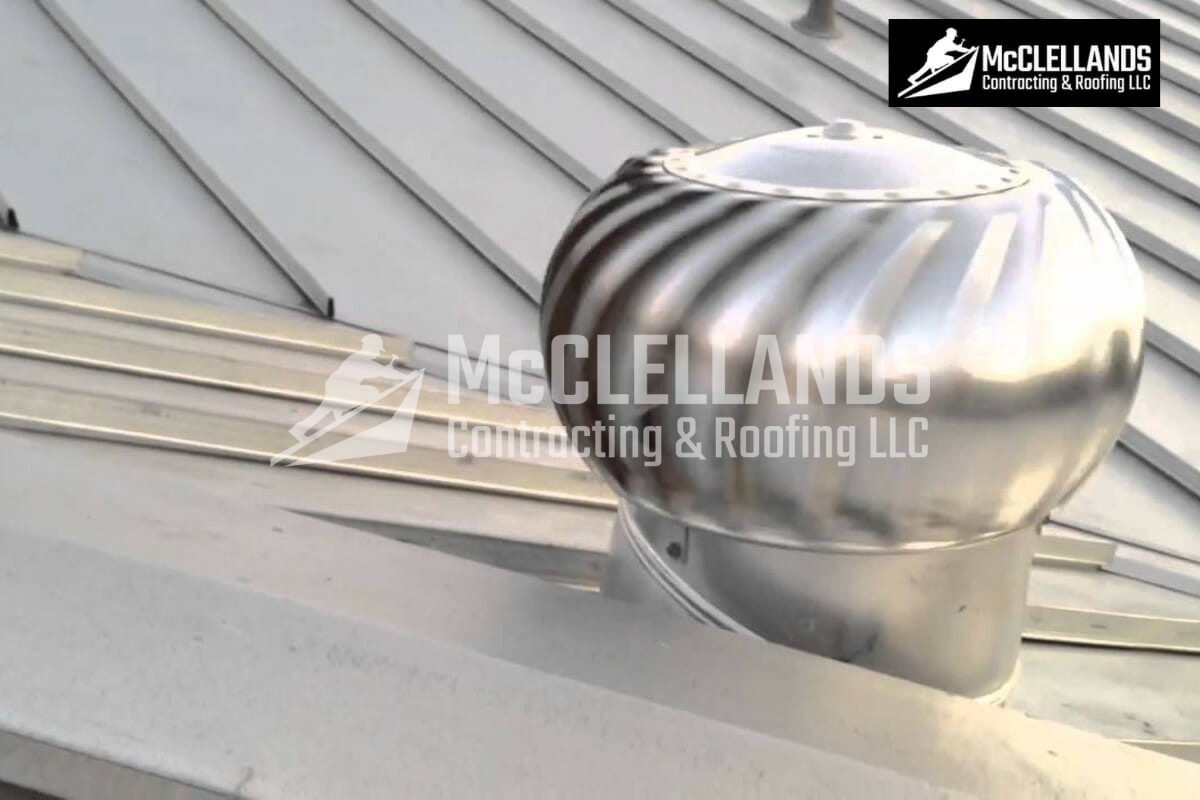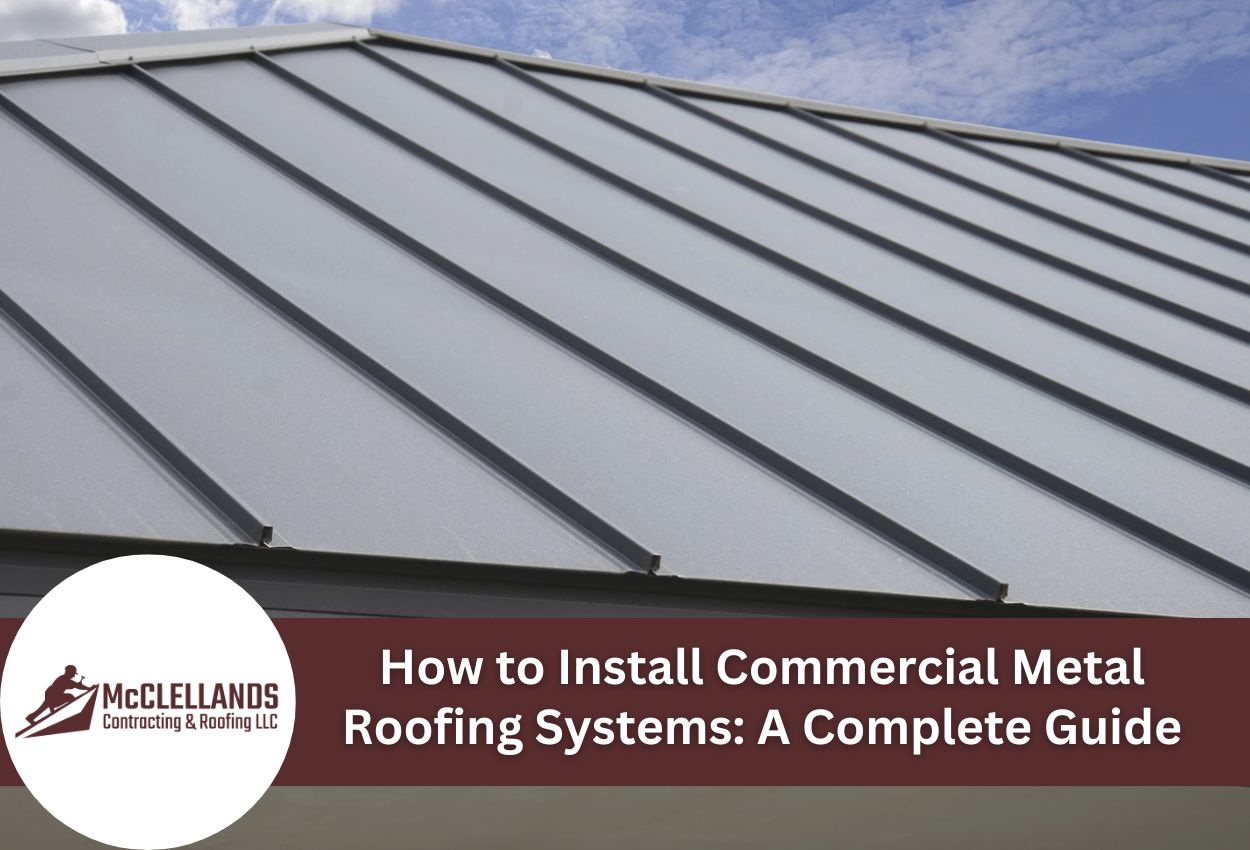Are you looking for roof vents for your metal roof? Installing the right roof vents on your roof not only helps to balance the temperature inside your home or office but also maintains the quality of your roof. However, deciding which vent to choose for your roof can be difficult.
Therefore, we’ve listed the required roof vents for a metal roof to help you make a well-informed decision. Read the complete guide below to ensure your roof vent is worth the cost you pay for it.
Types of Metal Roof Vents
Ridge Vents
Roof ridge vents are the most common type of ventilation installed for roofs. They are also known as exhaust vents, as they exhaust the hot or warm air in a home by creating a vacuum inside your attic. Installed along the roof’s peak, ridge vents increase the ventilation inside your building and extend your roof’s lifespan. One of the biggest advantages of roof ridge vents is that they cut your energy bills short and increase energy efficiency.
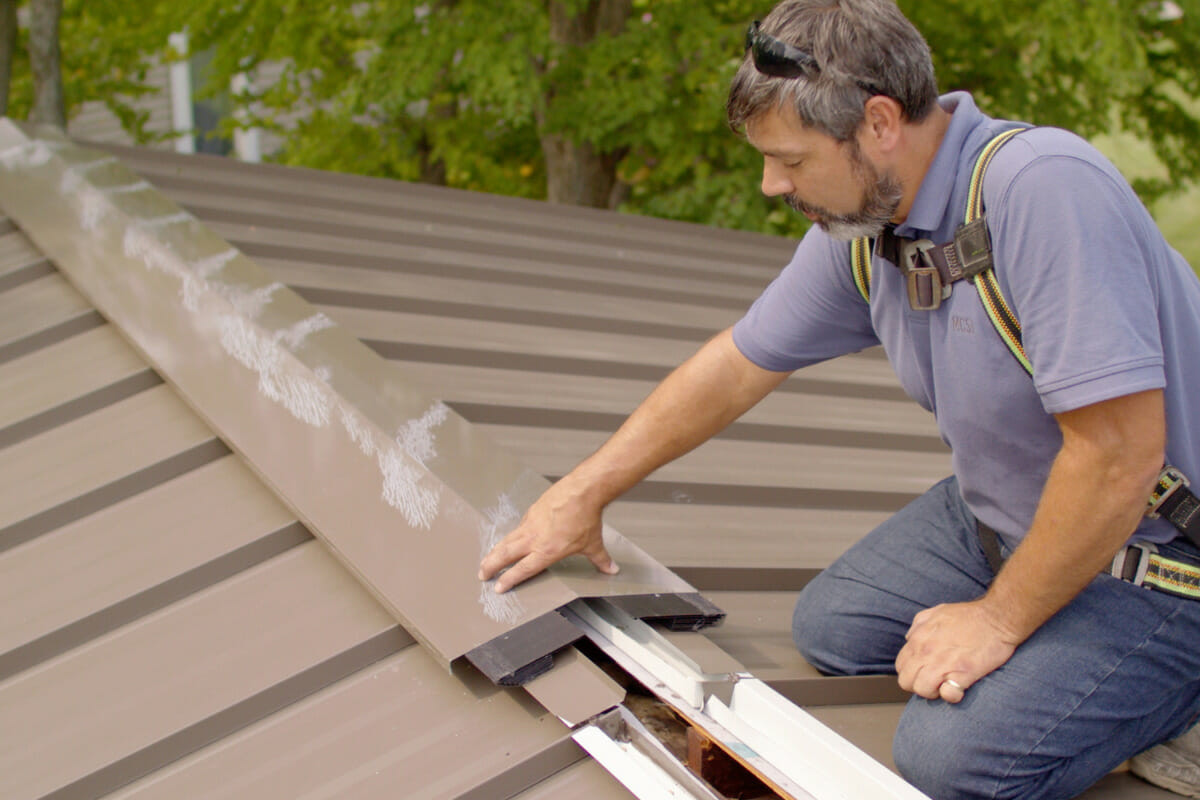
Gable Vents
Gable vents are typically installed by cutting a hole in the gable end of the roof and inserting a vent cover over the opening. This allows hot air to escape from the attic space and prevents moisture buildup that leads to mold, rot, and other damage to the roofing system. Gable vents work in tandem with soffit vents installed along the roof's eaves to draw in cool, fresh air from outside.
One of the primary advantages of gable vents is that they provide a low-profile, aesthetically pleasing solution for attic ventilation. This can help extend the roofing system's lifespan and reduce the need for costly repairs down the line.

Static Vents
Static vents are typically installed by cutting a hole in the surface of the roof and inserting a vent hood or cap over the opening. This allows hot air to escape from the attic space and prevents moisture buildup that leads to mold, rot, and other forms of damage. The advantage of static vents is that they are relatively easy to install and maintain compared to other types of vents. Since they work in tandem with soffit vents, they effectively reduce the amount of heat and thus allow cooler air to enter the attic and replace it. This creates effective ventilation inside your home or office, reducing energy costs.
While static vents are a good option for ventilation, they are vulnerable to high winds and strong storms.
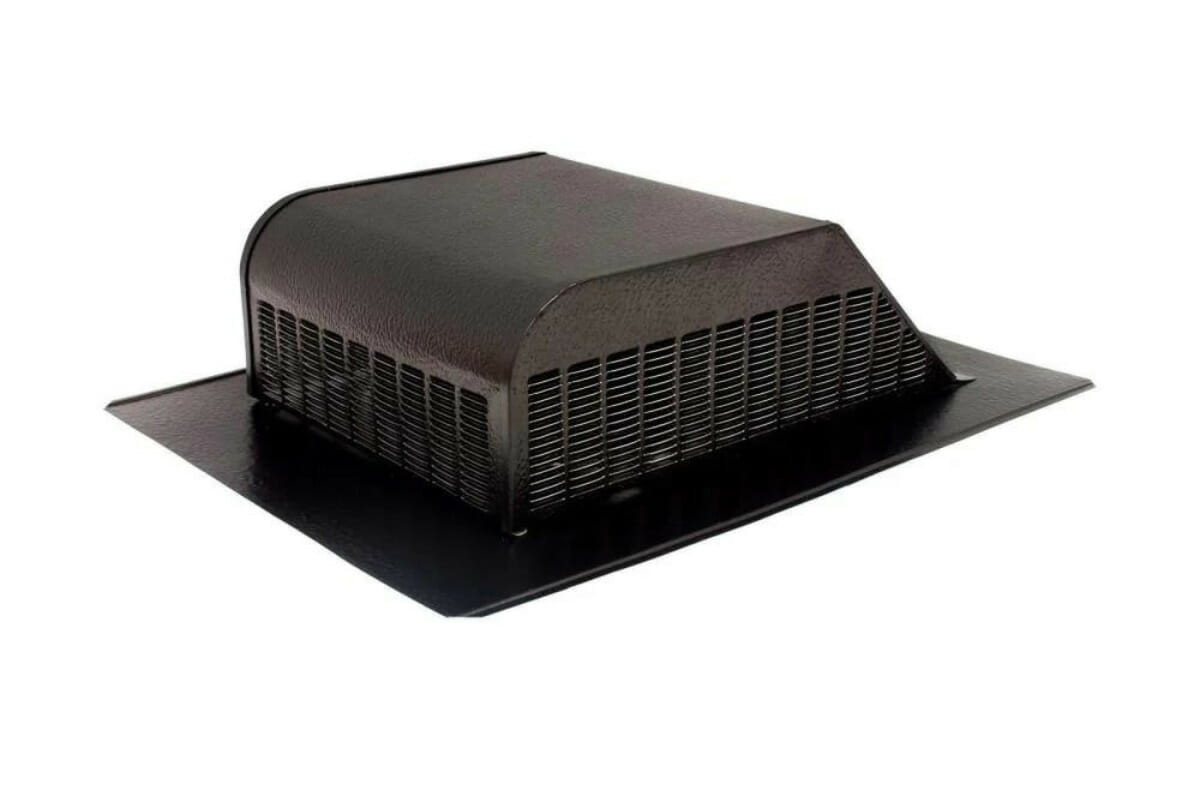
Soffit Vents
Soffit vents are typically installed by cutting holes in the soffit, which is the underside of the eaves of the roof. The vents are inserted and fastened to the soffit using screws or other hardware. The vents are also sometimes installed with baffles or chutes to ensure that airflow is properly directed into a home and not blocked by insulation or other materials.
Soffit vents are highly effective at drawing in cool, fresh air from outside and circulating it through the home and attic space. This helps reduce the temperature and moisture levels in the attic, preventing damage to the roofing system and improving energy efficiency. Soffit vents are also relatively easy to install and can be customized to suit the specific needs of different roof designs.
If you want to know more about soffit vents, read our blog: Do soffit needs to be vented?
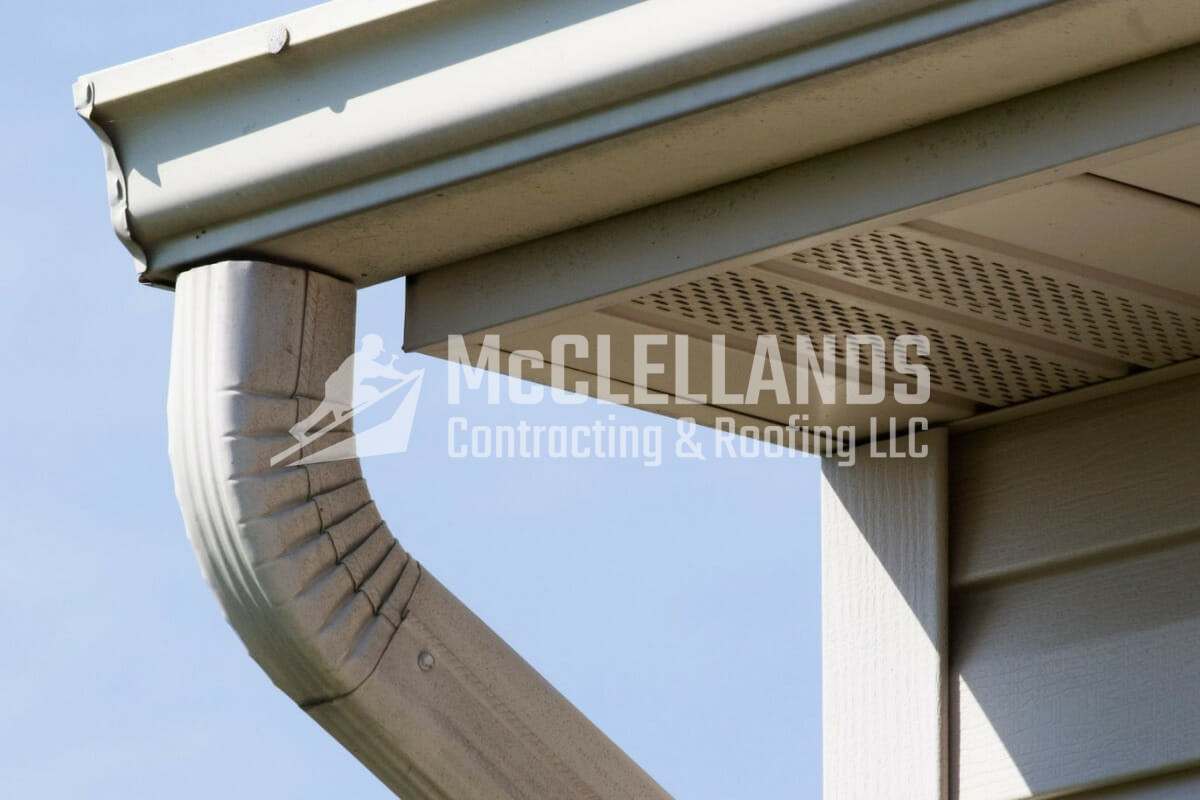
Factors to Consider When Choosing A Metal Roof Vent
Choosing the right roof vent for your metal roof is an important decision to make, so consider the following factors to help you make the right secure decision for years to come.
A. Roof Size
When selecting metal roof vents, it's essential to consider the size and pitch of the roof. Larger roofs may require more vents to ensure proper ventilation, while steeper roofs may require vents with larger hoods or turbines to create sufficient suction and draw out hot air.
B. Climate
The climate and environment in which a roof is located also impact the choice of metal roof vents. For example, homes in areas with high humidity levels may require more ventilation to prevent moisture buildup. In contrast, homes in areas with harsh weather conditions, such as heavy snow or strong winds, may require more durable and weather-resistant vents.
C. Aesthetic Needs
Roof vents come in various shapes, sizes, and colors to match any style of home imaginable, as well as the personal preferences of the homeowner. Some vents are designed to blend in with the roofline, while others may serve as a decorative element, the choice is up to you.
Tips To Choose the Best Metal Roof Vents
A. Determine the type of metal roof vents needed - Acknowledge the places where you need ventilation with the help of a skilled roofer and determine the type of roof vent you’ll need.
B. Calculate the number of metal roof vents - A professional roofer will be able to help you calculate the number of roof vents you actually need in order to maintain the proper level of ventilation inside your building.
C. Consider the quality of the metal roof vents - When searching for high-quality ventilation for your metal roof, choosing the right materials is one of the most critical decisions. It's essential to invest in quality vents for your home, such as those crafted from aluminum, vinyl, and steel, to ensure long-lasting and effective ventilation.
D. Consider the manufacturer's reputation - An unskilled contractor may not help you get the results a skilled contractor can. Therefore, you should work with reputable and trustworthy roofers to be sure the vents your purchase will provide you with the maximum benefits when installed.
E. Consider the cost of the metal roof vents - When purchasing roof vents for your metal roof, it's important to consider the cost of the materials compared to the quality of ventilation they provide. Take the time to carefully weigh these factors before deciding on a vent to ensure that you're getting the best value for your investment.
The Installation Of Metal Roof Vents
If you decide to install roof vents on a metal roof yourself, ensure you follow some practical guidance.
A. Preparation
Before installing metal roof vents, it's important to prepare the roof properly. This involves measuring and marking the locations for the vents and ensuring that the roof is clean and free of debris. Additionally, it's important to ensure the installation is done safely, using appropriate safety equipment, and following all relevant safety guidelines.
B. Installation Process
In general, the process involves cutting holes in the roof to install the vents, followed by using the appropriate fasteners and sealants. Proper alignment and spacing of the vents are essential to ensure proper ventilation and to prevent issues such as water infiltration, or poor airflow.
C. Mistakes To Avoid During Installation
When installing metal roof vents, you should avoid common mistakes that can compromise the effectiveness of the ventilation system, or cause damage to the roof.
Common mistakes include:
- Installing vents in the wrong location or at the wrong angle
- Using the wrong type of vent for a roof’s design
- Failing to seal around the vents properly.
It's also important to avoid over-tightening fasteners, which can damage the roof. Finally, ensure you have installed the vents safely and have followed relevant safety guidelines to prevent accidents or injuries.
Hire A Professional Roofer To Ensure Quality Installation
If you want to install roof vents on your metal roof, you’re in the right place. McClellands Contracting and Roofing, LLC in Pittsburgh will help you install top-quality vents, and ensure their durability and efficiency. Call our expert team of roofers at (412) 353-5660 for a free consultation and get started on your roofing project today!

